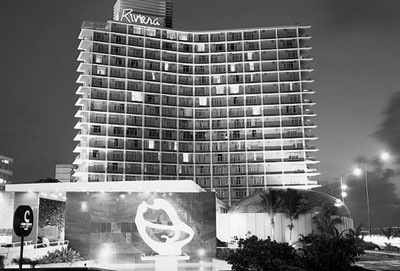On the trail of the young Che Guevara
This item appears on page 66 of the June 2009 issue.
by Deanna Palic
Ernesto Guevara, the Argentine revolutionary who became known as Che, helped Fidel Castro seize control of Cuba in the late 1950s. His image has inspired countless T-shirts, tattoos, posters, radical chic berets and, recently, two films.
In 1979 I had the opportunity to visit Cuba, legally. It was the 20th anniversary of the Cuban Revolution, and the US government was allowing its citizens to travel to Cuba. I was even allowed to receive entry and exit stamps in my passport. The cost of the one-week, all-inclusive trip was $999, including a flight from Los Angeles to connect with a charter flight from Miami to Havana.
Our hotels were of the “best available” category. Nevertheless, Canadian, European and South American tourists were everywhere; Cuba was definitely on their “must travel to” list. Around the island, images of Che were inescapable.
A few years later, international hotel chains — Sol Melia, Accor Hotels and Superclubs — began construction there in a big way. Today, Sol Melia has 24 hotels in Cuba.
In recent years, the film industry has also picked up on Che’s charisma. The 2004 film “Motorcycle Diaries” tells the true story of a 23-year-old medical student from Argentina, Che Guevara, who motorcycled across South America (Argentina, Chile, Bolivia and Peru) with his friend Alberto Granado. The trek became a personal odyssey that ultimately crystallized Che’s budding revolutionary beliefs. The film is based on Che’s own diaries of the trip.
In 2008 “Che,” an epic 2-part production, was released, featuring Benicio del Toro in the starring role. Part one chronicles Che’s involvement in the Cuban revolution. Part two, also based on his diaries, is a highly perceptive — and truthful — account of the futility of attempting to export revolution, even when the conditions appear to be promising.
The Bolivian government has opened up the Che Trail, which allows visitors to follow the path of Guevara’s last march before he was captured in the village of La Higuera by the Bolivian army. Several tour operators are offering tours based on Che.
Journey Latin America (phone [44-20] 8747 8315, www.journeylatinamerica.co.uk) is offering a 3-week escorted “Motorcycle Diaries” tour (not by motorcycle) from Buenos Aires to Lima, July 29-Aug. 21, 2009. The cost is $4,500 to $5,000, not including flights to and from South America.
The company, which is based in Britain, also offers tailor-made trips to any of the locations along Guevara’s and Granado’s route, as shown in “Motorcycle Diaries.”
For experienced motorcyclists, MotoDiscovery (Spring Branch, TX; 800/233-0564, www.motodiscovery.com) offers South American expeditions. The “High Andes Expedition,” for example, is a trip through Argentina, Chile, Peru and Bolivia for $6,950, including shipping of your bike.
The Che Trail in Bolivia is a public/private initiative, backed by the relief organization CARE International and the Bolivian Ministry of Tourism, intended to bring visitors to the place where Guevara spent his final days, La Higuera.
Ruta Verde Tours Calle 21 de Mayo 318, P.O. Box 4030, Santa Cruz de la Sierra, Bolivia; phone/fax [+591 3] 3396470 or [+591] 708 498 71 or e-mail info@rutaverdebolivia.com) offers a 3-day all-inclusive package to La Higuera from Santa Cruz, Bolivia, for $380 per person, double occupancy, or $670 single.


